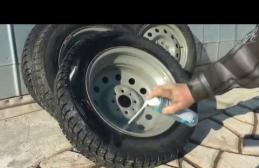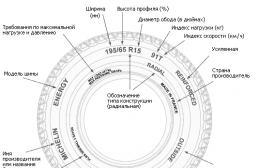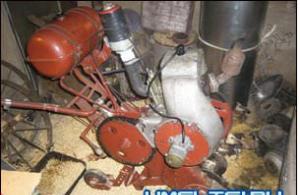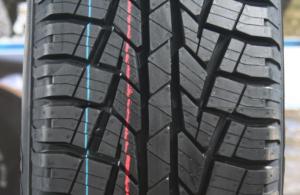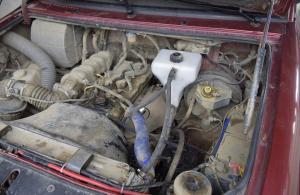Modern car batteries practically do not require care and maintenance - this is the opinion of most motorists and driving school instructors. In fact, this is not entirely true, and in order for the purchased battery to honestly work out its due date, certain measures are still necessary. Especially with prolonged use of the car in high temperatures.
The first thing to do constantly is keep the battery clean, because if conductive dirt accumulates on its cover, short circuits between its terminals are possible. The second is to constantly make sure that the battery is securely fixed in its socket. And thirdly, it is enough to regularly check the electrolyte level in the battery, since its changes have an extremely negative effect on the performance and overall life of the battery.
At the same time, both a decrease in the level and its excess are not allowed. This is done in any battery, while most do not know how to check the electrolyte level in a maintenance-free battery, although this does not require complex manipulations - they have special indicators. Regardless of the type of indicator and its name, they allow you to check the electrolyte level in the battery quickly and with a high level of reliability.
Why check the electrolyte content
The required solution level is clearly defined by the battery manufacturer. When it is normal, all the plates located inside the battery are completely covered by it, which ensures the battery is able to function normally and meet the declared capacity. Any changes make bad adjustments to the "working" process of the battery, and many problems appear - from rapid self-discharge to short circuits and destruction of internal plates. In the latter case, reanimation of the old battery may be completely impossible.

The electrolyte level in a car battery must be constant, as well as its density. In addition, the poured solution must be clean, that is, free of impurities. In their role, very often various chemical elements can act, which significantly alter the process of normal operation, reducing the life of the battery. By regularly checking the electrolyte level in the battery, you can independently determine the presence of some contaminating elements. So, if during recharging the electrolyte acquires a crimson color, this indicates the presence of manganese, and if the solution is contaminated with copper, there will be excessive gassing.
How to check the level correctly
Before checking the electrolyte level in the battery, you need to decide on a room that must be fireproof and have good ventilation. The procedure after that will be as follows:

All these manipulations are appropriate only if there are no min-max marks on the battery. So, the electrolyte level in the glass tube should vary between 12-15 mm. operation of the battery with a level below 12 mm is strictly not allowed. You can see how this parameter is checked in the video:
Attention! Wear thick rubber gloves before determining the electrolyte level in the battery, as the acid from the electrolyte can cause severe skin burns.
Why electrolyte levels can drop
Can be distinguished 4 main reasons for a decrease in the electrolyte level in the battery.

A decrease in the electrolyte level occurs as a result of water boiling away - the acid remains in place due to the fact that it is heavier than water. Accordingly, if it needs to be restored, you should only top up with distilled water, and nothing more. A common mistake of many inexperienced drivers who do not know what to do when they find a low electrolyte level in the battery is to top up with new electrolyte. This only leads to an increase in its density, which negatively affects its performance and service life.
If the question - what should be the level of electrolyte in the battery and how to check it - is quite simple, then with the question of determining the density, everything is not so simple. After the electrolyte level is restored, the battery must be charged. And only after that you can start measuring the density of the electrolyte. To do this, you need to use a special device - a hydrometer. After some time has elapsed since the end of charging, the battery is placed on a flat surface and all plugs are unscrewed.

The rubber bulb of the hydrometer is compressed to expel all the air from it, and its tip is immersed in the first battery can. After releasing the pear, you must wait until the device is filled with liquid. The float inside the flask will show the density. As a rule, most devices have colored scales - the normal value will correspond to the location of the float in the green sector. If the density is lower, a concentrated solution should be added to the battery, if higher - distilled water. Repeated measurements must be carried out after 3-4 hours, when all the liquid acquires the same density. Do not shake and "flop" the battery to force the process. More details about the check are described in the video:
Consequences of improper electrolyte levels
If the electrolyte level of the car's battery is not checked or the results are ignored, the consequences will not be long in coming. As mentioned above, the normal level in the battery is 12-15 mm. If it turns out to be less, and the battery continues to operate, the plates will be the first to suffer. They begin to slowly collapse and crumble, causing the formation of sludge. Subsequently, this threatens the formation of the so-called. bridges between the plates, which, due to their current conductivity, become a source of permanent short circuits, seriously impairing the operation of the battery, reducing its power, making starting the engine more and more difficult.

Driving with a high electrolyte content will also negatively affect the plates, which will corrode too high acid content. In addition, it will begin to actively splash out of the battery, including through the holes designed for the gas outlet. As a result, they may become clogged. Liquid falling on the battery cover quickly causes oxidation of the contacts, as a result of which the contact is broken and it becomes difficult to start the car. In addition, it threatens with the same closures.
297. Since detonating gas is formed during the operation of the storage battery, it is impossible to inspect it by illuminating it with an open fire.
Serviced batteries (for example, in VAZ cars) in the summer should be once a month with intensive use, and in the rest of the year, after 2500 - 3000 km of run, check the electrolyte level and bring the level to normal by filling in distilled water (when the electrolyte is heated, only water evaporates) ...
Every 10,000-15,000 km (once a year) check the battery attachment, as well as the cleanliness and reliability of fastening the cable lugs on the battery pole posts. White plaque from the pins and tips is removed with a sandpaper, after which a thin layer of technical petroleum jelly is applied to the outer (not contact!) Surfaces.
298. The electrolyte spilled on the surface of the storage battery is removed with a cloth soaked in soda or 10% solution of ammonia.
Dirt and moisture are removed with a stiff-bristled brush and a dry, clean cloth. Do not let the electrolyte get on the metal parts of the car: this will lead to corrosion. The places of its contact are cleaned and painted with acid-resistant paint.
If the smallest cracks appear in the case and the battery filling mastic, have the battery repaired. Temporarily, the crack on the battery can can be sealed with plasticine, after rinsing the place around it.
Check regularly that the battery is securely attached to the vehicle; tighten the nuts if necessary.

Do not tighten or unscrew the cable lug nuts with pliers. Only with a wrench! You can’t hit the tip of the wire, pull the wire.
When starting the engine, the starter is turned on for no more than 10-15 seconds and only 2-3 times in a row, making a pause between the starts for at least half a minute. Take care of the battery, do not be lazy to switch to the appropriate gear for any changes in driving speed.
Checking the electrolyte level in the battery
299. The electrolyte level in the storage battery is checked through the filler holes using a glass tube with an inner diameter of 3-5 mm.
Lower the tube into the battery until it stops in the protective plate, then firmly close its outer opening with your finger and remove it. The electrolyte column in the tube will indicate the level in the battery.

In batteries with an indicator (tube), the electrolyte must be at the same level with it or higher than it by 5 mm. In batteries without a tube or indicator, the electrolyte level should be 5-10 mm above the safety plate or the upper edge of the separators.
If the electrolyte level has dropped as a result of water evaporation (normal process), you should add distilled water to the battery (never tap water or from a roadside stream - the battery will run out) at a temperature of 15-25 "C.
If the electrolyte level is higher than normal, you should suck it out with a rubber bulb with an ebonite tip, otherwise it will spill out of the battery.
300. After a long drive, inspect the battery. If electrolyte remains on its surface, then splashing occurs.
The reason for this may be an increased level of electrolyte in the battery (check and set normal) or the appearance of cracks in the case and the filling compound of the battery (the battery should be repaired).
If neither the first nor the second, then you should check and adjust the voltage of the generator and check if the battery is sulfated.
If during an external examination it is found that the electrolyte is leaking, and it is not possible to immediately return the battery for repair, periodically add electrolyte to the faulty compartment.
Battery sulfation
301. In case of weak sulfation, the battery can be saved at the service station by one or several cycles of low current charge / discharge.
A highly sulfated battery must be replaced: repair is not possible.
Sulfation occurs when driving a car with a too low electrolyte level in the battery, as well as when the battery is in a discharged or not fully charged state for a very long time. In this case, large crystals of lead sulfate, insoluble in the electrolyte, are formed on the surface of the battery plates.
Battery storage
302. If the car is not used for a long time, the battery should be removed and stored in a dry place.
The optimum storage temperature for serviced Russian-made batteries is from -20 ° C to 0 ° C, for non-serviced Western batteries - from O ° C to +27 ° C. At such temperatures, plate corrosion and battery self-discharge slow down. The stored battery is recharged every three months (6ST-55A battery - once a year). Storing a battery in a discharged state makes it unusable. If the battery is removed for the winter without operating the car at this time of year, then the battery is checked and recharged in the spring, before installation.
Electrolyte preparation

When water is poured into the acid, it boils, the heated acid splashes and burns.
The electrolyte is prepared from only the highest grade battery sulfuric acid (the first grade will lead to premature battery failure) and distilled water that was not in iron vessels. Dishes for electrolyte preparation can be ceramic, ebonite, lead (not glass - it will burst).
The electrolyte density normal for the central regions of Russia - 1.28 g / cm3 (for regions with a temperate climate) - is prepared from 0.36 liters of sulfuric acid and 1 liter of distilled water.
The prepared electrolyte is left in a sealed container for 15-20 hours so that it cools down and a precipitate falls to the bottom.
Sulfuric acid is not stored in a loosely closed container: it quickly absorbs atmospheric moisture.
In the northern regions, where the temperature in winter drops to -40 ° C, the normal electrolyte density is 1.29 g / cm3 (measured at a temperature of + 20-25 ° C). To prepare such an electrolyte, 0.38 liters of sulfuric acid are taken per liter of water.
In warm southern regions, where there is no severe frost, the density of the electrolyte should be 1.26 g / cm3, and it is prepared at the rate of 0.33 liters of sulfuric acid per liter of water.
The higher the density of the electrolyte, the lower its freezing point.
304. If during storage for a month the battery is discharged by more than 10%, it needs to be inspected and repaired.
This can happen if you filled it with non-distilled water, or if metal particles get into the battery. Perhaps replace the electrolyte by flushing the inside of the tank and wipe the surface of the battery.
The self-discharge of the battery is also accelerated when the battery is stored for a long time. In this case, the density of the electrolyte in the lower layers becomes higher than in the upper ones.
305. If the battery discharges too quickly when using the car, first of all strengthen the self-control for the economy of the driving mode.
Avoid starting the engine frequently, and when driving at low speeds, never forget to downshift.
In addition, turn off unnecessary additional headlights and other unnecessary consumers of electricity installed by you.
Sometimes it is necessary to check whether a current leakage occurs due to insulation damage in the electrical equipment (then a mi-liammeter connected between the tip of the positive wire and the positive terminal of the battery will show a current of more than 1 mA with disconnected consumers), as well as checking the generator and regulator voltage, sulfation test.
306. The density of the electrolyte in the serviced battery is measured with an acid meter - an automobile hydrometer (to find out the degree of battery discharge).
The tip of the acid meter is lowered into the filler hole of the battery, the electrolyte is sucked in and, according to the divisions of the hydrometer floating in the flask, the density of the electrolyte is determined.

The density reduced from the norm (constituting 1.28 g / cm3) by 0.01 g / cm3 corresponds to a discharge of 6%. It should be remembered, however, that a temperature correction must be made to the readings of the acid meter. The density of the electrolyte should be equal to 1.27-1.28 g / cm3 at a temperature of +25 ° C. At a temperature of + 5-10 ° C, it increases by about 0.01 g / cm3, at a temperature of -10 ° C - by 0.02 g / cm3, at -25 ° C - by 0.03 g / cm3. The density of the electrolyte is not measured when the electrolyte level is abnormal, or when the electrolyte is "boiling" or too hot. Add distilled water to the battery and wait for the electrolyte to mix (several hours if the battery is discharged).
If the battery is 25% discharged in winter (acid meter shows 1.25) or 50% in summer (acid meter shows 1.19), it needs to be removed and recharged.
If you do not have a hydrometer, it is sufficient to check the electrolyte density twice a year: in the spring and in the fall.
Accumulator charging
307. The battery can be charged without removing it from the car, only by first disconnecting the positive and negative cables.
To charge the battery, proceed as follows (points marked with *> are not taken into account if the vehicle is equipped with a maintenance-free battery).
- Before charging, check the electrolyte level and, if necessary, top up with distilled water.
- A frozen battery must thaw before charging.
- Unscrew the battery plugs or pull them out with a small screwdriver and place them over the holes. This prevents acid spraying out and gases generated during charging can escape freely.
- For charging, it is best to use a current equal to 0.1 of the battery capacity (if the battery capacity is 55 Ah, then the charging current should be 5.5 A.
- Charge the battery only in a well-ventilated area (if the battery is installed, the hood must be open).
- The positive pole of the battery is connected to the positive pole of the charger and the negative pole to the negative pole.
- Charge the battery until gas actively forms in all cells.
- After charging, check the electrolyte level, top up, if necessary, with distilled water.
- Also check the density of the electrolyte. If in one of the cells it is significantly (more than 0.04 g / cm3) lower than in others (for example, in five cells - 1.28 g / cm3, and in one - 1.18 g / cm3), then , the battery is defective and needs to be replaced.
- Wait about 20 minutes for the gas to escape from the battery, then screw or insert the plugs.
With the battery disconnected, the engine must not run, otherwise the electrical equipment will be damaged.
The battery is usually charged by specialists.
308. If the battery “runs out” and does not rotate the crankshaft, and there is no way to start the engine from the tug, and there is no one nearby to help push the car, try the following trick.
Apply the handbrake, jack up the left drive wheel, close the carburetor choke, engage fourth or fifth gear. Wearing gloves or mittens (so as not to get scratched), rotate the suspended wheel in the direction of travel.

When the engine starts running, engage neutral and remove the jack.
309. When purchasing a new battery, select it in capacity equal to or close to the capacity of the battery being replaced.
Installing a battery with a capacity much larger than the calculated one gives only a temporary gain, because such a battery will be operated undercharged. When buying, give preference to German or Scandinavian batteries, which are designed to work in a climate similar to Russian, and at the same time are of very high quality. When buying a battery filled with electrolyte, check whether it is charged and what the density of the electrolyte is. The quality of European dry-charged batteries is guaranteed. Most of the Russian batteries, although they are called "dry-charged", require additional charging after filling the electrolyte. Fill the electrolyte in the newly purchased battery, after an hour or two, check the density and recharge if it is lower than it should be.
"Lighting" from the battery of another car
310. When vehicles with a faulty battery are “lit” from your battery, short circuits of the battery and powerful arcing are possible.
The same can happen if you accidentally short the opposite terminal to vehicle ground. Be careful when handling batteries.
311. For "lighting" (that is, to facilitate starting the engine) from the battery of another car, it is better to use a cable with insulated clamps with a cross-sectional area of 25 mm2.

Both batteries must have a voltage of 12 V. The discharged battery must not be frozen, the liquid level in it must be normal. Cars should be at such a distance that they do not come into contact with each other, and stand on the hand brake, the manual gearbox lever is in neutral, and the automatic gearbox is in the "P" position. All electricity consumers must be disconnected. The donor vehicle's engine must be idling to avoid damage to the generator. When making it easier to start the engine in this way, you should be careful not to stand next to the battery with a lit cigarette, as flammable gas can be emitted from the battery being charged.
312. If you have a special, industrial-made cable to facilitate starting the engine, connect it in the following sequence:
The red cable is connected to the positive pole of the discharged battery;
- the other end of the red cable is connected to the positive pole of the donor battery;
- connect the black cable to the negative pole of the donor battery;
- the other end of the black cable is connected to the "mass" of the car, the battery of which is discharged (best of all, to any metal part screwed to the engine block).
Check that the cable clamps are securely installed: the terminals of the connected cable must not touch each other, and the positive terminal must not touch ground (body or frame).
And further...
313. When starting the engine with a discharged battery, do not turn on the starter for more than 10 seconds.
The fact is that the terminals and the cable heat up from the strong current. There should be a half-minute pause between starter starts. Do not lean over the battery during the lighting process: you may get burned. After starting, the cable is disconnected in the reverse order to that in which it was connected.
314. In severe frosts, take the battery home at night.
Provided, of course, that the car has an autonomous anti-theft alarm system.
And one more little trick: when leaving the car in a parking lot or garage, disconnect the positive terminal of the battery. If a hijacker is looking for your car, it will take him extra time to understand why the engine won't start, and this extra minute will kill the intruder.
The functions of the anti-theft device can also be performed by a ground switch installed in a place known only to the owner. Connect a conventional fuse (2A) parallel to the contacts of the switch with two thin wires. Now, when the "ground" is turned off, the circuit will be closed through the fuse, and the side lights will be on. However, when the ignition is turned on, a fuse that is not rated for such a load will instantly blow and the circuit will de-energize.
As I have written many times, a car battery is lead acid. Inside the battery, there must be a special electrolyte, in fact it is distilled water and sulfuric acid, diluted in the right proportion (otherwise, the work on the accumulation and release of energy will not occur). But from time to time, weather and operating conditions, water can evaporate, and the level of the electrochemical liquid itself drops accordingly. And the worst thing is that the lead plates inside are beginning to be exposed. Why is this bad, what level should be - we analyze in detail, well, as usual, the video version at the end ...
In the beginning, I would like to note that if the electrolyte level is more or less than what is required, then this can damage your battery (well, or at least, it will not work normally).
Serviced and unattended battery
In terms of the structure of the case, the batteries differ in the so-called -. Now the second type is more and more prevalent, that is, when buying, you practically do not need to follow it (for beginners, this is just a godsend). However, this option also has big disadvantages, for example, if the water evaporates from the cans, then you won't add it so easily. Many throw away () such batteries and buy new ones, although it is worth adding water (to the desired level) and it will work for a long time

Many people think that it will not evaporate from there at all, but it is not! Maintenance-free options also have special valves (holes) for venting internal gases
And when water evaporates (as I wrote from above), the electrolyte level drops, which inevitably leads to a deterioration in the characteristics of the battery.
Low level - what is dangerous
It is dangerous for many reasons, I will try to tell you simply and quickly:
- If the level drops, it means that the water evaporates. The density of sulfuric acid is growing (since it does not go anywhere). This has a very negative effect on the plates themselves, they simply begin to break down faster.

- If the acid concentration is high, it can lead to an accelerated process.
- The upper part of the plates is exposed - and this also negatively affects them when charging. They are corny warming up and can crumble.
- If the electrolyte is not enough (the plates are bare), the battery capacity also drops, that is, you simply don’t start the car.
From my own experience, I will say that batteries with bare plates do not last long, as a rule, they crumble or sulfate in 3 to 6 months of use. Therefore, it is very important to add the liquid to the correct values!
High level - what is dangerous
It seems to have decided, low is BAD! But too high is BAD too? YES - ALSO BAD! But why?
Look - the normal density inside the battery is approximately 1.27 - 1.29 g / cm3 (if we take our working fluids, this is approximately 35% sulfuric acid and 65% distilled water). This electrolyte does not freeze at extremely negative temperatures (up to -40 degrees Celsius).
If you , break the balance and, say, pour 70% of the water composition, then our density will drop to 1.22 - 1.25 g / cm3. And such a liquid freezes already at -20, -30 degrees, which is quite common in Russia. Of course, in the summer you will most likely not experience problems, but in winter the battery can freeze, so it will break the case and you will simply throw out the battery.
So you need to pour just as much as you need (within the limits of the permissible).
What needs to be added inside?
So, let's move on to almost the most interesting. BUT first, a little reminder, many people mistakenly think - what you need inside you need to add ready-made electrolyte that is sold in automotive or specialty stores. BUT IT'S NOT SO!
As I said from above, it is the water that evaporates from the cans, and it is the water that needs to be added to the cans, BUT NOT ELECTROLYTIC!

Once again I want to repeat to everyone, it is the aqueous solution that evaporates, but not the acid! If you add, to the level of an electrochemical liquid, then you raise the density to a high level, say 1.32 - 1.35 g / cm3, plates from such a concentration wear out much faster, and sulfates are also formed!
Therefore, only distilled water, and only a certain level.
How much should you add?
If you have a serviced battery, that is, you can physically unscrew the plugs and see the plates, whether they are bare or not, this is one situation.
But if you have an unattended option, then adding to it is much more difficult (more on that below).
We take a standard situation - the plugs were unscrewed, and the plates were exposed (the upper part sticks out above the liquid). So how much to pour, to the eyeballs (under the cork) or how?
UNWAYS NOT UNDER THE CORK! It's too much. Take a bottle of distilled water (you can), and add about 1 - 1.5 cm above the plates. That is, the general composition should cover them precisely for this value.

By the way, on many batteries, there are special marks - lower and upper, it is within these boundaries that the level should be. However, they are now being applied to the body less and less.
Ideally, after adding water, you need to recharge the battery and measure its density. It should be about 1.27 g / cm3.
Now we take the situation with a maintenance-free battery - as I wrote, there are no plugs on top, but somehow you need to add the distillate! But how? I have about it (read informatively).
However, it is difficult to achieve this in simple ways. Moreover, never tear off the top of the lid, this is not correct, there are labyrinths in it that absorb gases evaporating from the cans. If it is broken, the battery will no longer be maintenance-free.

The most effective way , take this and drill a hole with a thin drill over the cans, to approximately the normal electrolyte level. Next, pump water there with a syringe, and then solder these holes with a soldering iron. Well, actually charging.
Sometimes car owners ask how to check. To put it more correctly and more accurately, we are talking about how to check the density of the electrolyte in the battery. As you know, the electrolyte level in the battery is measured if the battery belongs to the serviceable category. In order to learn how to do this on your own, both in the garage and at home, you need to know what a liquid electrolyte is and how a serviced car battery works inside.
What is inside the battery
Inside the car's battery, six compartments, or "cans", are arranged in a specific sequence. Each compartment has lead plates with positive and negative charges. The "can" is hermetically sealed, and its contact with other elements occurs through a common polar connection.
The voltage level in each battery compartment is 2, with a maximum of 2.1 volts. All elements are connected to each other in a serial electrochemical circuit, having a total voltage of 12 volts at the output.
Due to the fact that each "can" is filled with a special chemical compound that has a liquid consistency, the car battery has the ability to accumulate and release an electric charge. This liquid is called "electrolyte", and such simple theoretical knowledge from the field of physics and chemistry will help you figure out how to check the density of a battery (more precisely, electrolyte) correctly.
Why it is necessary to check the density of the electrolytic liquid
Any electrolyte is nothing more than a chemical mixture consisting of distilled water and sulfuric in a certain proportion: water 65%, 35% acid. It is this percentage that allows the electrolyte to accumulate an electric charge without causing damage to the sensitive lead plates of the battery.
In the process of continuous operation of the battery, constant changes in the density of the electrolyte occur, which in a certain way can affect its working functions. The very concept of density, by the way, means nothing more than the percentage of sulfuric acid to distillate.
If the level of sulfuric acid inside the battery gets too high, it can end up badly for the plates. There are situations when the acid simply eats away at the lead, and the plates are destroyed.
If there is too little acid, this means that the battery is discharged or close to being completely discharged. The battery cannot operate with the capacity indicated in its technical specifications. For example, energy may simply not be enough in a cold start of an internal combustion engine.
Also, if the driver tries to drive on a discharged battery for a long time, the process of sulfates settling on the plates is inevitable. A dense white bloom forms on them, which is sometimes very problematic to remove. At a critical level of sulfates, either the destruction of the plates or a short circuit will occur. Would need .
How the battery works
To know how to correctly measure the electrolyte level, it is important to remember that any battery works on a cyclical basis. First, it accumulates charge inside, and then, when the engine is started, it gradually begins to give it to the car, setting it in motion. When the battery gives off the charge, the acid releases the very sulfates (salts) that settle on the plates of the "cans". And in the "banks" is the formation of water. This leads to the fact that the electrolyte level is significantly reduced.
What needs to be done in this case:
- when the density level is higher than required, you need to dilute the electrolyte with distilled water;
- when the density decreases, the battery urgently needs a full charge for at least 10-12 hours.

How to check electrolyte and measure its density
Before checking the electrolyte in the battery, clean its surface from dirt and dust so that when you remove the covers from the battery compartments, they do not get inside ... Take a thin glass tube, its diameter can be from 4 to 5 millimeters. Now you need to lower the tube into the compartment to the end, so that it touches its bottom. The hole can be closed with a finger (do not forget to protect yourself by wearing technical gloves!).
Remove the tube from the can: a small amount of electrolytic liquid should get into it. Focus on its height - how much space it takes up in the tube. If the height of the liquid is 10-15 millimeters, the density is within the normal range, and when the level is higher or lower, the density must be corrected.
Before you start adjusting the density, you need to make accurate measurements - in each battery compartment separately, since they do not communicate with each other. Be sure to charge the battery before measuring, otherwise the results may be incorrect. In addition, shortly before the process, the battery must be left in a room with room temperature for 3-4 hours (from 20 ° C, it can be slightly higher). After all, a chemical liquid is directly dependent on the temperature factor.
To measure the level of electrolyte density, a simple instrument such as. It is also sometimes called a more complex word - a densimeter. But in essence they are the same thing. The hydrometer consists of a tip, alternately lowered into the battery compartments, a flask, a rubber bulb for suction of liquid and a measurement scale, which is located inside the flask.

The algorithm for checking actions will be as follows:
- wipe the tip dry with a clean cloth;
- lower it into the battery compartment;
- take a small amount of liquid with a rubber bulb;
- watch the "behavior" of the electrolyte: when it stops moving - measure the density on the scale;
- drain the liquid back into the "jar".
As you can see, the reading technique is very simple. The main thing is not to forget to protect your hands with gloves.
Digital metrics to target
Since the chemical component of the battery directly depends on temperature factors, there are generally accepted digital indicators indicating the level of the optimal electrolyte concentration. In the south of the Russian Federation, it is 1,25 , in the regions of the middle lane - 1,27 , and in the northern regions - 1.29 g / cm 3.
So how do you check the battery electrolyte level and density? Take the battery to a room with room temperature, remove any dirt from it, open the jars and use a glass tube and hydrometer. Remember to wear gloves. should be done regularly to ensure the best level of performance.
Basically, a battery is a simple thing. It does not require troublesome maintenance, but only if you operate your car as standard. Long journeys on the highway, frequent ignition, temperature drops - all this affects the electrolyte level in the battery, and it must be checked periodically.
The work of the battery (or abbreviated battery) will be debugged if you remember the time of its service. Now they are making such batteries that are becoming obsolete and need to be replaced. In theory, the only thing that is important is to periodically charge it and monitor the electrolyte level. The service life of the battery is extended if the device itself suggests it. For example, behind the battery there are plugs of the electrolyte-containing containers compartments, which allows it to be refilled there. If there are no traffic jams, then the device has a special indicator that notifies about the state of the battery - its dull green or even white color indicates that the device has died.
An electrolyte is a liquid that creates a special environment that stores and distributes electricity through chemical reactions. In fact, this is a solution of H2SO4 in H2O (sulfuric acid concentrate in distilled water).
The acid itself (the most concentrated) is a rather dense substance, 1.84 g / cm³, the electrolyte is 1.40 g / cm³. when sulfuric acid reacts with water, a lot of heat is generated. If you take low-quality sulfuric acid, you can screw up the battery.
It is important to know that the density of the mixture of sulfuric acid and water in the battery should vary from 1.07 to 1.30 g / cm³! If the density is higher or lower than the permissible limits, the battery will work poorly and not for long. The temperature of such a liquid is + 15 ° C.
Reasons for violations in the battery:
- The battery may boil; if the temperature rises sharply, one of the constituents of the electrolyte - water - will simply evaporate.
- The generator can junk, the voltage will jump, which will contribute to improper circulation of electricity in the car charger.
- The battery can be discharged, especially if the machine is idle for a long time.
Checking the electrolyte level in the battery Is a very important procedure. Because too low a level will dry out the inner plates, the cells will connect and the battery will be covered. And if the level is too high, then the outputs to the generator can oxidize and disable the entire system at once and for a long time.
Checking the electrolyte level in the battery.
There are two ways to determine the concentrate of the required liquid:
- Through the plugs of the cells,
- By eye (by the magic eye).
If we talk about the magic eye, then this is not an entirely accurate diagnosis that requires additional verification. You need to gently knock on it (on this eye) and see how the air bubbles rise. You will see the color indicator more clearly, and immediately use your analytical skills: Green - normal, White - recharging is required, Red - it's time to add water, the acid has increased. There are other colors, but these are the most common in the Russian Federation.
It is good if there is a scale with a minimum and a maximum on the charger case. Then you just look at the level of the solution and decide what to do.
The last method of checking is useful for clarifying the first and the impossibility of checking the second: we take a glass tube, unscrew one of the plugs on the car charging case, push inward to the fuse plate, plug the test tube with a finger, pull it out. There will be electrolyte in the tube, if it is from 10 to 15 millimeters, everything is in order.

What electrolyte level should be in a car battery?

As already mentioned, the permissible rate of this important solution fluctuates between 12 and 15 millimeters. Excess electrolyte can be drained out with the help of available tools - an ordinary medical syringe or syringe. Not enough - pouring water. Just don't top up with tap water! You will immediately ruin your charger. Water, firstly, must be distilled, and, secondly, its temperature must be in the range from +15 to + 25 ° C. Water should be poured into a special hole - the filler neck - up to the limit of the lower end of the tube. Filled - put on charge for three to four hours, and then we advise you to check the density of the resulting liquid so that the level of sulfuric acid corresponds to the permissible norm. The permissible rate is 1.27-1.29 g / cm 3. It is measured by a device called a hydrometer.
The question of how to measure the electrolyte level in a battery is not the first and most important one. Along with him is the second, concerning his density. If you do not add water - it's up to little, just add more, and in case of excessive dilution, you will need a corrective

